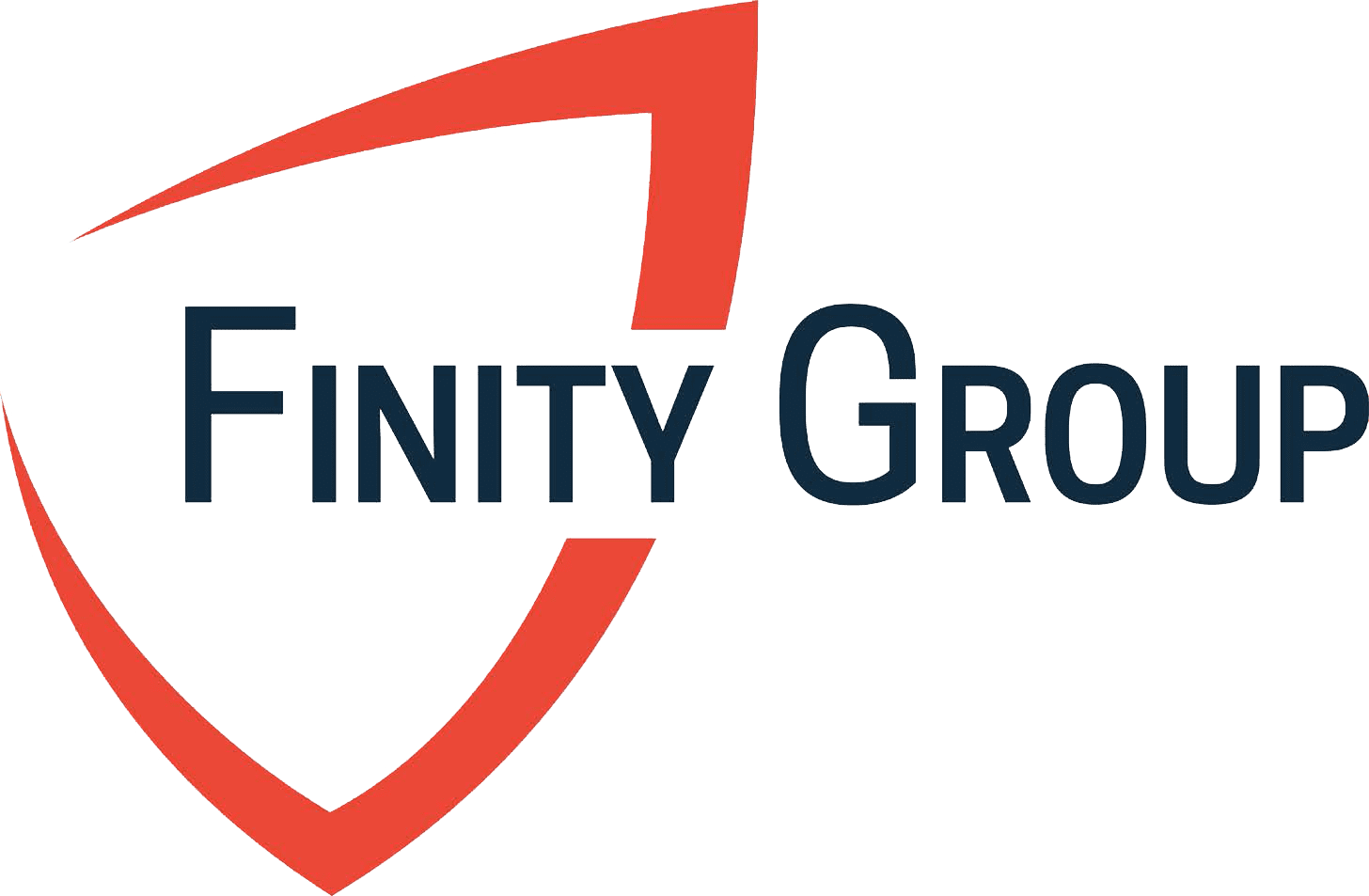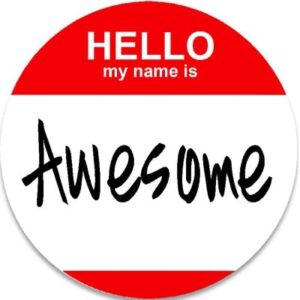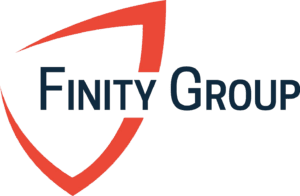Written by: Peggy Haslach
Listen Here!
According to the CFP Board, currently, 76.4% of financial advisors are men, 23.6% are women and <0.1% are non-binary[1]. There aren’t any statics about the number that are transgender, but if you look at the above statistic and compare it to the general population (50.5% female, 49.5% male, and 7.1% who identify as LGBTQIA), I think we can safely deduce that there are way too few transgender and LGBTQIA folks working in financial services. I think we can also conclude that LGBTQIA+, Transgender, and non-binary clients are going to need to find allies who are open to working with them if we are going to service these communities. However, when I hear financial professionals ask for training on financial planning for LGBTQIA+, I must remind them that the planning does not fit neatly into a box or a one-hour training session at a convention. I also hear this from advisors who identify with one letter in the acronym that despite their efforts to engage with the entire community, they have found that most clients are just like them and identify with the same letter.
There is a reason for that. There are as many planning differences in the letters of the acronym LGBTQIA+ as there are colors in the rainbow, so trying to do a one-size fits all plan is like trying to paint a rainbow with black and white paint. This year, rather than recycle my high-level Planning With Pride article (Planning with Pride for LGBTQ Families in 2021 (thefinitygroup.com), I thought I would focus on 5 tips for ALLIES to let LGBTQIA+, transgender and non-binary folks know that you are open to working with them.
Before I jump in, I want to point out the definition of ALLY. According to the Human Rights Campaign (HRC)[2], “an ALLY is a term used to describe someone who is actively supportive of LGBTQ+ people. It encompasses straight and cisgender allies, as well as those within the LGBTQ+ community who support each other (e.g., a lesbian who is an ally to the bisexual community).”
If we are going to open our practices to working with LBGTQIA, transgender, and non-binary clients, we must start from the beginning. We need to gain their trust so that we can gather the information necessary to understand their personal and financial circumstances. This is step one in the Financial Planning Process[3]. We can’t proceed to steps two through seven until we gather the information needed to start the engagement. Here are the five steps to build the rapport you need to gain trust.
Tip #1: Say Their Name!
The Dale Carnegie book “How to Win Friends and Influence People”[4] starts the process of relationship building with one quote “Remember a person’s name is to that person the sweetest and most important sound in any language.”
What that means is if you want to build rapport with anyone right away the best place to start is to learn how to say their name. In the course, they teach you to do it this way.
“Hi, my name is Peggy Haslach and your name is?”
Hopefully, they will mirror my introduction when they give me their name.
“Hi Peggy, it is nice to meet you. My name is…”
In the book, Carnegie instructs that we should use the person’s name as many times as possible. That will help you remember their names. The book goes on and gives memory hacks to help you remember their name the next time you meet them. This is important especially if you are trying to get a working relationship with the individual.
After your meeting when you write down your notes, write down the person’s name, its pronunciation, and something that will help you remember their name especially if it is difficult to say. By the way, I just assumed two things. One is that you take notes and the second is that you have a memory hack that you use to remember names.
This all sounds simple, right? Then why does it get complicated when you are working with transgender and non-binary individuals who have changed their names? For some reason, some folks get bent out of shape because transgender and non-binary humans do not want to be addressed by their “dead name.” A dead name is a name that a transgender person was given at birth and no longer uses upon transitioning. Unless you have a good reason to bring up their dead name, you should never use it!
Is there ever a time or reason to ask a person for their dead name?
Yes, you may need to know a person’s dead name if there are medical or financial records under that name that are needed for an application. People worry that they are concerned about the transition information. They are not. They want the name so they can find the records. I explain it this way when someone is filling out an insurance application. “Part of the underwriting process is to search records for medical history, prescriptions, driving records, etc., so you will want to let them know the name and the years the records would be under that name.”
If you need to enter the information on a person’s records, then put it in the notes. Some medical records systems and CRM now have functions that overwrite the dead name so that anyone looking at the file will not use the dead name. Again, you do not ever want to use this in addressing the individual. You also want to make sure that others who access this information, like assistants, do not address them by their dead names.
If you think of it, we do this for our clients who get married, divorced, or just change the name they use. I know people who used one name in high school, a different name in college, and even a third name during their careers. I know couples who have gotten married and rather than take each other’s last name, they chose a last name that they felt represented their relationship better. Some people use their first name, other people use their middle name, and some people use a nickname that has nothing to do with the name they use. In fact, my given name is Margaret, I go by Peggy. I don’t use Margaret and often don’t respond to it. Except when I was young, and my mom used it. Of course, then she used my full name Margaret Anne Teresa Haslach, and I knew I was in trouble.
Rather than question the reason the person has changed their name, please put all that energy into remembering to use the name they use. Say their name!
Tip #2: Use Their Pronouns!
After you get their name, the book instructs you to use their name in conversation often to start building rapport. This can get a little obnoxious if you overdo it, so the book goes on to tell you to listen for other things and remember other facts about the individual that will help you remember their name and establish the level of respect you hope to reach. The use of pronouns fits in perfectly here. By finding out what pronouns a person uses, you learn how they want to be addressed. You also learn information that shows that you want to talk to them in a way that respects and honors them.
Lately, there’s been a big commotion about pronouns, and we need to go back and look at this a little bit deeper. Some are saying there should only be two pronouns or because there are only two true genders. That is not right. Did you know that there are languages where there are no genders? Indonesian, Finnish, Hungarian, Mandarin, and even Japanese are languages that technically do not have any pronouns. By forcing somebody to go by standard English pronouns we are not treating people as how they want to be treated, but treating people as how we feel they should be treated. There is nothing wrong with letting people know how you want to be treated in a conversation. That same courtesy should be used for both sides of the conversation.
How do we find out their pronouns and if they use them? The best way is to add a little bit more to the Dale Carnegie introduction.
Hi, my name is Peggy Haslach, I go by she/her pronouns. And you are?
Now I know might be thinking, “What if I don’t want to use any pronouns?” Then don’t. In fact, there are many people even in the LGBT community who don’t want to use pronouns. And there are those who come from countries that do not have any gendered pronouns who are right there with you. But because you don’t want to use pronouns does not mean that another individual should not be able to use their pronouns. Again, it is a matter of respect. By learning a person’s pronouns, you are telling them you want to have a conversation with them that does not get awkward because you use the wrong pronoun.
Now, one last thing. It might get awkward the first few times you use them if you’re not used to using pronouns and don’t instinctively use the pronoun the person has told you to use. What do you do in that case? You apologize and say, “I’m sorry I’m not used to using your pronouns. I’m trying to learn how to do better. Thank you for giving me the opportunity to try.”
Let’s wrap this up. Pronouns are the way people inform each other about how they want to be addressed. If you want to open a conversation and someone offers their pronouns, use them. Likewise, if you want someone to address you properly, let them know your pronouns.
But wait, are there times that you would not want to use pronouns? Yes, read on to find out.
Tip #3: Watch Your Words!
In the previous tip, we talked about using pronouns and listening for words that people use to describe themselves or to identify themselves so that you can build rapport. Is there ever a time when we would not want to use genderized pronouns or words?
Yes, there is. Let’s go back to that meeting where we learned the person’s name and found out about their pronouns. Now we want to get deeper information about the individual. Most of us use a template, Fact Finder, or a discovery that is a standardized list of questions. Often, the first question on that list is “Are you married or single?” Then depending upon how they answer that question many of us take a shortcut on the second question because we assume. If you are talking to a woman and they give every indication that they are straight you’re going to ask the question, “What is your husband’s name?” If you know that they identify as being gay, you might ask their wife’s name.
Oftentimes your assumption is right and that excites both you and the client because you are so perceptive. By the way, “Gaydar” is real. If that experience goes well then that means you’re probably going to get referrals to others where the assumption continues to work.
Sometimes the assumption doesn’t work and when that happens it gets awkward. Not all lesbian women who use she/her pronouns are married to women who use she/her pronouns. In fact, in recent years, I’ve noticed that the combinations are almost infinite on gender, identity, and pronouns. And once you get into that awkward situation where you assume wrong, it can cause the relationship to go south very quickly. How do you prevent that?
Rather than assuming someone with she/her pronouns is married to somebody with he/him or even she/her pronouns, try using THEY/THEM in the sentence. For example, rather than saying “Is she or he going to join us at the next meeting,” say “Are THEY going to join us in the next meeting?”
You can prevent this uncomfortable back and forth by using an inclusive phrase that allows the client to fill in the blanks. A question I will ask: “Is there anybody else in your household that you would like to participate in our planning sessions? If so, could you please tell me a little bit about them?”
This also comes in handy when you are talking about any family members. What if their child has a gender-neutral name like Chris? Do you assume that Chris is he or she? How about saying, “Do you have any children or dependents in your household? If so, what are their names? And if they tell you their names and you need to know how old they are then that’s what you ask, “How old are they?”
You can do this exercise with your entire script and pick up phrases that can be reworded so that they will fill in the blanks for you and you don’t have to second guess. Typical examples: instead of husband or wife, use partner, or spouse. Instead of daughter or son, use little one little ones, dependents, or the current favorite, kiddos. And then by adding the phrase, “Please tell me more about them?” you open the door for them to give all the information you need.
If the answers that they give mesh with how you identify, you have established common ground. This is the reason advisors say though they want to collaborate with all members of the community they found that they have a book that is very much like them. Likewise, if the person says something that you don’t understand or does not identify with the same letters as you the conversation might not be as smooth. We cannot assume anyone who is an expert in working with #LGBTQIA is an expert on all the letters, so what do you do if someone identifies with different letters in the acronym? We’ll get into that in our next tip.
Tip #4: Learn Their A, B, C’s
People’s identities don’t fit neatly in a box. Yet people try to continually put them in the same box. Recently we’ve been seeing this happen with transgender and non-binary and the LGBT community. We are not going to take the time to go into a glossary of all the terms. Instead, I will give background and touch on four that will clear up some misinformation we are hearing in the media these days.
What do all the letters mean? LGBT, LGBTQ, LGBTQIA, LGBTQQIA2S, and all the other variants of the acronym were developed by communities specifically to recognize the solidarity between different groups of people persecuted for their sexualities, gender identities, and gender expressions.
The acronym is an amalgamation of terms. Some letters are about sexual orientation, whom they are sexually attracted to, lesbian, gay, bisexual, or queer. Others are about their gender identity and expression, transgender, agender, nonbinary, or genderqueer. Some of the letters in the acronyms have two words associated with them. Others have more. For example, Q could be for questioning or queer. A could be for ally, asexual, or agender.
Some people assert that we’ve been adding new letters. That is not the case. Letters are added to expand upon the experiences of those in the community you are working with. For example, two-spirit (2S) comes from Native Americans and implies that an individual holds two spirits, one male and one female. Though the term might be new to people, the concept has been around for ages.
Many refrain from talking about sexual orientation and gender identity or expression because they’re afraid of saying the wrong thing. By listening for, and respecting a person’s self-identified terminology, you can build respect and trust. Again, if you refer to a person in the way they identify, using the words they use, then your conversation will be easier and more comfortable.
It is helpful to read one of the many glossaries available online. That way if a term comes up in the conversation, you can look it up. The glossary that I use is from the Human Rights Campaign (HRC)[5]. Before we move on to the last tip, the four terms that I want to discuss because of the misinformation, anti-LGBTQIA, and anti-trans rhetoric we are seeing in the news are Cisgender, Transgender, Intersex, and Non-Binary.
According to the HRC’s definition, the term Cisgender is used to describe a person whose gender identity lines with those typically associated with the sex assigned to them at birth.
Transgender is an umbrella term for people whose gender identity and/or expression is different from cultural expectations based on the sex they were assigned at birth. Being transgender does not imply any specific sexual orientation therefore, they may identify as straight, gay, lesbian, bisexual, etcetera. Also, not all transgender individuals have surgery or medical procedures when they transition[6].
Intersex: Intersex people are born with a wide variety of differences in their sex traits and reproductive anatomy, including differences in genitalia, chromosomes, gonads, internal sex organs, hormone production, hormone response, and/or secondary sex traits. How often does this happen? According to InterACT advocates for Intersex Youths, a specialist in sex differentiation is called in for roughly 1 out of every 1500 – 2000 births. But many more are born with subtler traits that will not show until they are older.[7]
Non-binary: An adjective describing a person who does not identify exclusively as a man or a woman. Non-binary people may identify as being both a man and a woman, somewhere in between, or as falling completely outside these categories. While many also identify as transgender, not all non-binary people do.
As you can see, the letters are a rainbow of colors and colors are an infinite number of combinations so that’s why it is particularly important to use the words that people use to identify themselves. It’s also important to be able to recognize the words that are being used to demean, humiliate, and tear down the community.
Tip #5: Rise and Repeat!
If you follow the first four tips and have built rapport to the point where you both feel heard and respected, then it is natural to engage in financial planning. All too often there are advisors who use these tools to land the client but then fall back into old practices over time. I can’t tell you the number of times I have been told, “My advisor said they were LGBT friendly” but later something happens to indicate otherwise. One such case was a lesbian woman married to a transgender man. She asked her advisor to screen her funds for ESG. Over time, she noticed that her funds were gradually shifting into stocks for companies that may have fit the “E” in ESG, but definitely did not fit the “S” or “G” because of the company’s stance on LGBTQ+ rights. One case was a company whose CEO has been outspoken against the transgender community. Now, it is very possible that the advisor was never told that the spouse was transgender or even that she was gay. Either way, when she goes back to ask about the investments, it is not going to be comfortable for anyone in the room.
If we truly are acting as fiduciaries and are doing what is in the best interest of the client when we engage in the planning, we will need to continue to use these tips throughout the life of the engagement. Unfortunately, in addition to the scenario I mentioned, we are currently seeing another force that could break the trust and respect we earned to establish a great working relationship. There is a misinformation campaign being spread about transgender individuals as states try to pass legislation to outlaw gender-affirming care, bathroom use, and participation in sports. Much of this misinformation is being pushed out in a way that causes people to start using terminology without knowing the effect it may have on others.
I’ll give you an example. Three years ago, I got into a conversation with a female athlete about transgender women who are athletes. At that time, I believed we were on the same page. Over the next couple of years, she was sending me emails about the group she was pulling together, and I noticed that the terminology had changed. She was no longer using transgender women; she was now using transgender biological male. And in the last e-mail I received from her the term she used was transgender-identified male.
My feelings on the subject had not changed. I was wondering if her thoughts had changed or if she was starting to use these new words because of the words that others were using to label transgender women and put them in a perceived scientific box. We see it all the time. It sounds logical, doesn’t it? Transgender Biological Male & Transgender Identified Male sound scientific or medical and therefore must be a fact. Right? No! They are words used to demean and demonize transgender women by using terms that they don’t use to identify themselves. It is a way to say that all transgender women are men. It is quite easy to fall into that trap if we use these words because they make us sound impressive, credible, or scientific. It can all be avoided if we listened to understand and learn the words and terms these individuals use to identify themselves.
To summarize, I know this article is about financial planning, but these same skills can be used by any professional, doctors, lawyers, and even veterinarians. If we say their name, use their pronouns, watch our words, respect how they identify, and continue this through the life of the engagement, then we will have a strong working relationship where we get to do the work we want to do…Planning with Pride!
Additional Resources Mentioned:
[1] CFP® Board of Standards January, 2023: https://www.cfp.net/knowledge/reports-and-statistics/professional-demographics
[2] HRC Glossary Of Terms: https://www.hrc.org/resources/glossary-of-terms
[3] Roadmap to the Code and Standards Booklet | CFP Board
[4] Dale Carnegie, “How To Win Friends and Influence People,” 1936 https://www.goodreads.com/book/show/4865.How_to_Win_Friends_and_Influence_People
[5] HRC Glossary Of Terms: https://www.hrc.org/resources/glossary-of-terms
[6] Get the Facts on Gender-Affirming Care – Human Rights Campaign (hrc.org)
[7] InterACT, # How common is intersex? https://isna.org/faq/frequency/
Related Blog Posts







